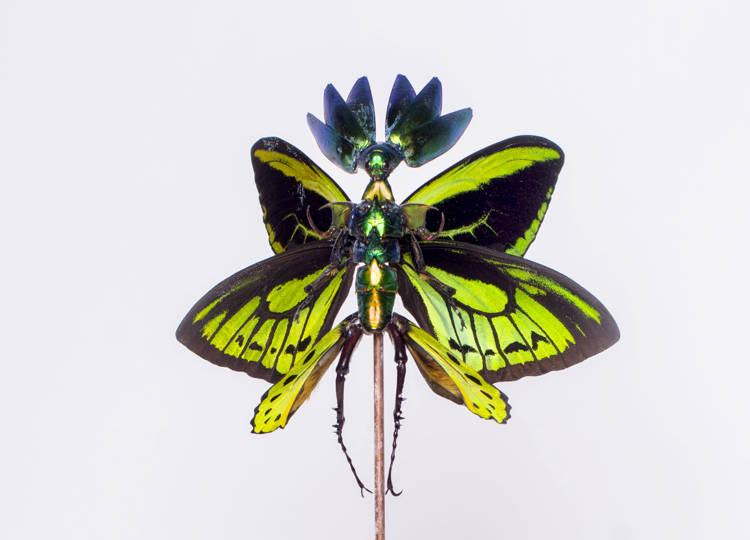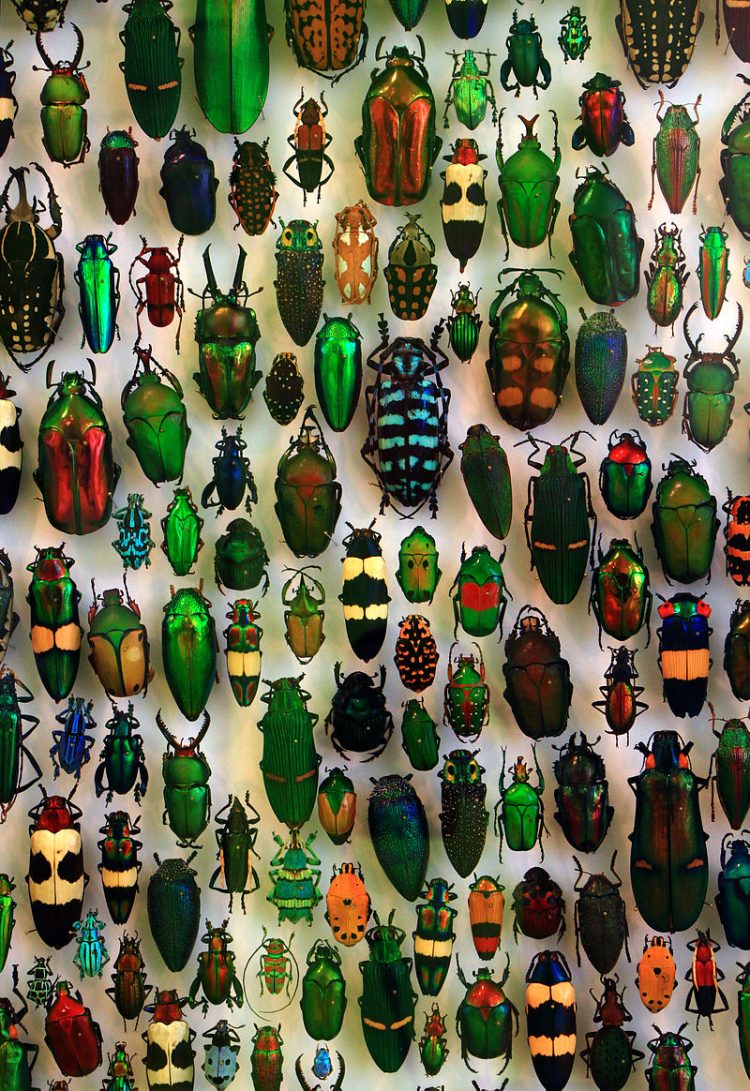Artist Bring Dead Bugs Back to Life as Otherworldly Insect Fairies

Amsterdam-based artist Cedric Laquieze creates creates eerie yet intriguing sculptures of fairies by piecing together various dead insect parts. Over the last 20 years, Cedric Laquieze has created hundreds of unique insect fairies by piecing together bug parts that complement each other in terms of color and texture. He collects dead insects specimens given to […]
This Buddha Sculpture Is Made from 20,000 Dead Beetles

Japanese artist Yoneji Inamura spent six years of his life collecting 20,000 beetles of different varieties and using them to create a five-foot sculpture of a popular Buddhist deity. It’s unclear how and when exactly Inamura started catching and collecting beetles. Some sources claim that it was during his days working for the local railroad, in […]
Artist Turns Old Circuit Boards and Electronic Components into Beautiful Winged Insects
UK-based artist Julie Alice Chappell has chosen an unusual medium for her sculptures – discarded electronics. She tears out circuit boards and other components from broken devices, and converts them into delicate insect figurines. Julie’s introduction to the unique art form occurred several years ago, when she happened to find a big box of tiny electronic components at ‘The […]
Mexican Artist Recreates Classic Paintings on Real Butterflies
After experimenting with candy and toothpaste paintings, Mexican artist Cristiam Ramos is now working with preserved butterflies. He spends several hours pouring over each wing, painstakingly decorating them with detailed replicas of classical paintings. Butterfly wings don’t naturally make for good canvases – they’re small, and the texture isn’t altogether right for painting. They’re each […]
Controversial Artist Unveils Work Created with Hundreds of Dead Insects

Damien Hirst is known as one of the most controversial artists of our time, and his latest work only adds to his reputation. Capaneus, part of the ‘entomology‘ series that hirst has been working on since 2009, features hundreds of insect species placed in intricate geometric shapes and fixed in place with household gloss paint. Considering many […]
